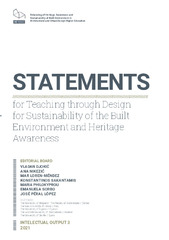Приказ основних података о документу
Green Blue Infrastructure
| dc.creator | Živković, Jelena | |
| dc.date.accessioned | 2023-11-15T13:37:45Z | |
| dc.date.available | 2023-11-15T13:37:45Z | |
| dc.date.issued | 2021 | |
| dc.identifier.isbn | 978-86-7924-281-5 | |
| dc.identifier.uri | https://raf.arh.bg.ac.rs/handle/123456789/1488 | |
| dc.description.abstract | EC Green Infrastructure Strategy (EC, 2013) defines Green Infrastructure (GI) as “a strategically planned network of natural and semi-natural areas with other environmental features designed and managed to deliver a wide range of ecosystem services. It incorporates green spaces (or blue if aquatic ecosystems are concerned) and other physical features in terrestrial (including coastal) and marine areas. On land, GI is present in rural and urban settings.” Although the EC definition includes aquatic ecosystems, the expression “green and blue infrastructure” (GBI) has recently started to be used in order to highlight more explicitly the aquatic dimension of the concept, alongside the terrestrial one. GI is a natural spatial structure that serves the interests of both people and nature. In contrast to usually mono-functional ‘grey’ infrastructures - GI is multifunctional. It aims to enhance nature’s ability to deliver multiple ecosystem goods and services that contribute to sustainable development by providing variety of environmental, social, biodiversity as well as climate change and adaptation benefits. Elements of GI differ in relation to scale, and span from forests, regional parks, rivers and floodplains etc., at regional level, to street trees, hedges, ponds, green roofs and walls, etc. at local site scale. GI planning and design is based on holistic understanding of the complex interrelations and dynamics of socio-ecological systems, and assumes interdisciplinary and multi-scale approach, thus creating a new challenges to academic education. | sr |
| dc.language.iso | en | sr |
| dc.publisher | University of Belgrade, Faculty of Architecture | sr |
| dc.relation | Enhancing of Heritage Awareness and Sustainability of Built Environment in Architectural and Urban Design Higher Education (HERSUS), co-funded by the Erasmus+ Programme of the European Union, grant number 2020-1-RS01-KA203-065407 | sr |
| dc.relation | info:eu-repo/grantAgreement/MESTD/inst-2020/200090/RS// | sr |
| dc.rights | openAccess | sr |
| dc.source | Statements for Teaching through Design for Sustainability of the Built Environment and Heritage Awareness | sr |
| dc.subject | Green Blue Infrastructure | sr |
| dc.subject | Green Infrastructure | sr |
| dc.title | Green Blue Infrastructure | sr |
| dc.type | bookPart | sr |
| dc.rights.license | ARR | sr |
| dcterms.abstract | Живковић, Јелена; Греен Блуе Инфраструцтуре; Греен Блуе Инфраструцтуре; | |
| dc.rights.holder | HERSUS | sr |
| dc.citation.spage | 314 | |
| dc.citation.epage | 321 | |
| dc.identifier.fulltext | http://raf.arh.bg.ac.rs/bitstream/id/5062/HERSUS_IO3_Zivkovic1.pdf | |
| dc.identifier.rcub | https://hdl.handle.net/21.15107/rcub_raf_1488 | |
| dc.type.version | publishedVersion | sr |

